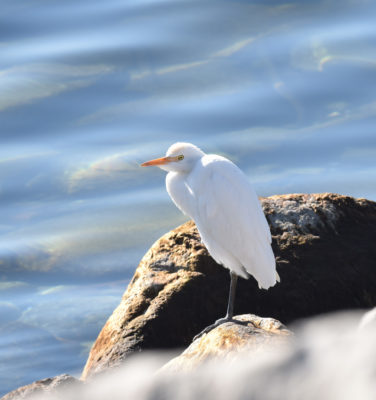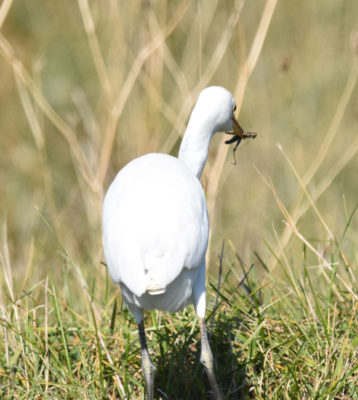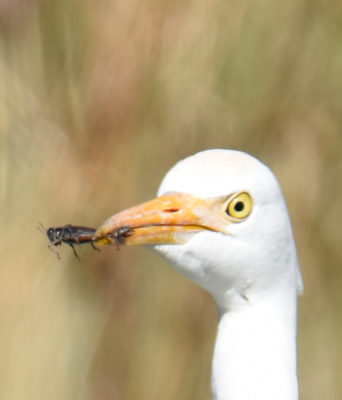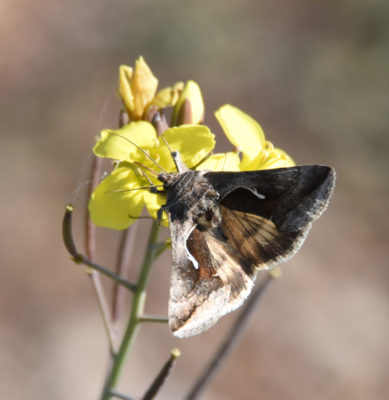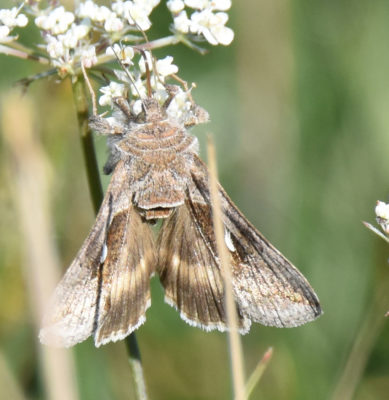The fall of 2016 has offered me some of the warmest, sunniest days for exploring outdoors of any November I’ve experienced. It’s not just me enjoying this unexpectedly good weather: yesterday on a ramble around Colonel Sam Smith Park in Etobicoke, I saw three types of Lepidoptera and one warm-weather-loving long-legged short white bird.
2016: the Year the Cattle Egrets Visited Southern Canada
Many young birds, and some older birds who have finished breeding for the year, wander off to explore new places and find food further away from their competition. In 2014, for example, large numbers of healthy, reasonably well-fed, young Snowy Owls came south and delighted people from southern Ontario to as far south as Florida.
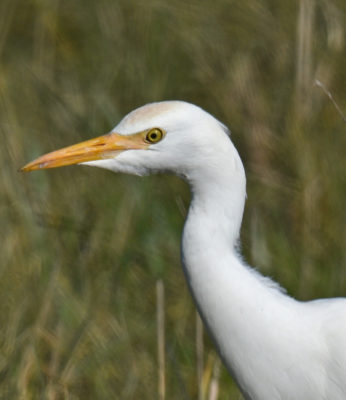
Cattle Egrets usually have a rusty patch on the top of their heads.
Starting late this summer and into the fall, reports have been coming in of Cattle Egrets moving into Canada from the USA. I don’t know enough about the plumage differences in these birds to know if they are juveniles that hatched this year, or post-nesting adults, but I have seen reports of them on all the major bird chat boards.
Where Should I Look for Cattle Egrets?
I heard that a single Cattle Egret had been staying at Colonel Sam Smith Park in Toronto, so I decided to break my routine and visit there one weekday morning. I’ve been to the park before so I knew that there is a large fairly open grassy area on the Lake side of the peninsula that arches out and to the west. That’s where I went to try to find it, after I enjoyed some time admiring a group of 4 migrant Northern Shoveler ducks in the duck pond.
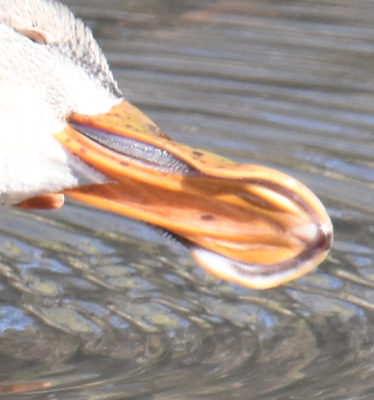
If you can click on the photo and see the larger image, you might see the comb-teeth-like edges to this Northern Shoveler female’s bill. They use them to strain small critters out of the water.
As I ambled through the park, I met lots of other people interested in this small white egret. Some of them, though, didn’t know that it’s not a conventional “wading” bird even if it looks like one. Cattle Egrets are named because they often follow large grazing animals through grasslands feeding on any insects that fly or leap away from the grazing herd. While they certainly can hunt along marshy edges and in ponds, that’s not the first place to look for them.
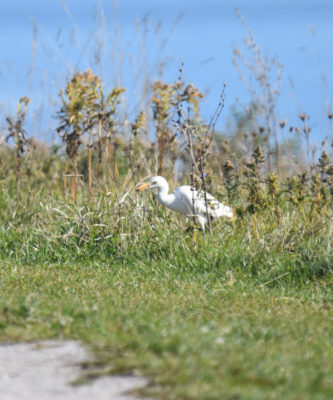
If you compare the Cattle Egret to the Goldenrod you may be able to judge its relatively small size. Unlike a Great Egret, it is nowhere near the size of a Great Blue Heron, for example.
Sure enough, the Cattle Egret was in this grassy area of the park. And I was not surprised that it was quite “tame” and acted oblivious of the people passing, stopping nearby to take photos, or watching it with binoculars. I suspect it considered us to be large grazing animals that could help it find insects! The Cattle Egret was wary of dogs, however, and moved away if one came bouncing along.
What Was the Cattle Egret Finding to Eat in Toronto?
I was a bit concerned about why the bird was spending so long in Toronto. Was it too weak to fly south again?
Watching it hunt for just a few minutes calmed my concern. While I watched it caught at least 7 large insects. I guessed they were likely crickets or grasshoppers because that’s what I was seeing the most of as I rambled around. My photos confirmed that at least some of the obviously large insects it was catching were grasshoppers. So I think it will move south again when it’s ready: It doesn’t seem to be in distress.
The Butterflies of November in Toronto
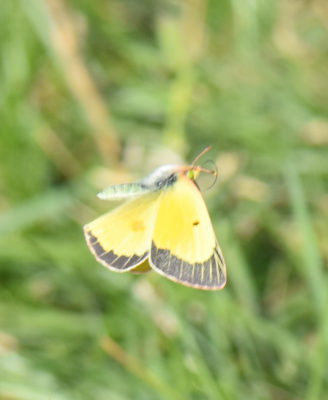
For some reason, I find butterflies like this Sulphur look “wrong” when they are beating their wings downwards.
I didn’t see any Monarchs at Colonel Sam Smith on November 7 although some people have reported seeing some very late ones down near Point Pelee and Long Point recently. I did see Orange and Clouded Sulphur butterflies though. And a single Cabbage White.
An interesting fluttery moth was also present. I saw at least 3 individuals, all of which were patrolling along the edge of the Lake stopping to get a bit of nectar at the various late blossoming plants.
Plants in bloom included Goldenrods, a few Asters, Chicory, what looked like Knapweed, Dandelions, what was probably a Mustard, a few Red Clover, Queen Anne’s Lace, and a showy plant that I thought was Viper’s Bugloss but I’m not so sure now I look at my photos. The butterflies and moths were taking advantage of all of these.
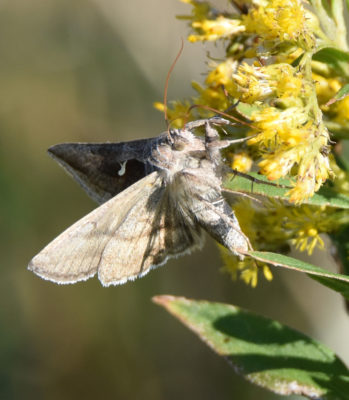
A second moth which is likely the same type.
Between the Shovelers, the Egret and the Lepidoptera, it was a very pleasant morning ramble!
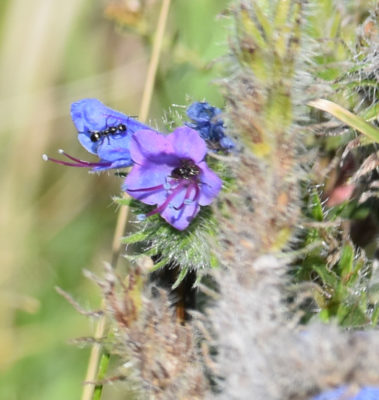
The “mystery” blue flowers which seem popular with ants
Related Reading
Join In
Have you had a Cattle Egret, Snowy Owl or other unusual bird wander its way into your neighbourhood? Please share your sighting with a comment.

